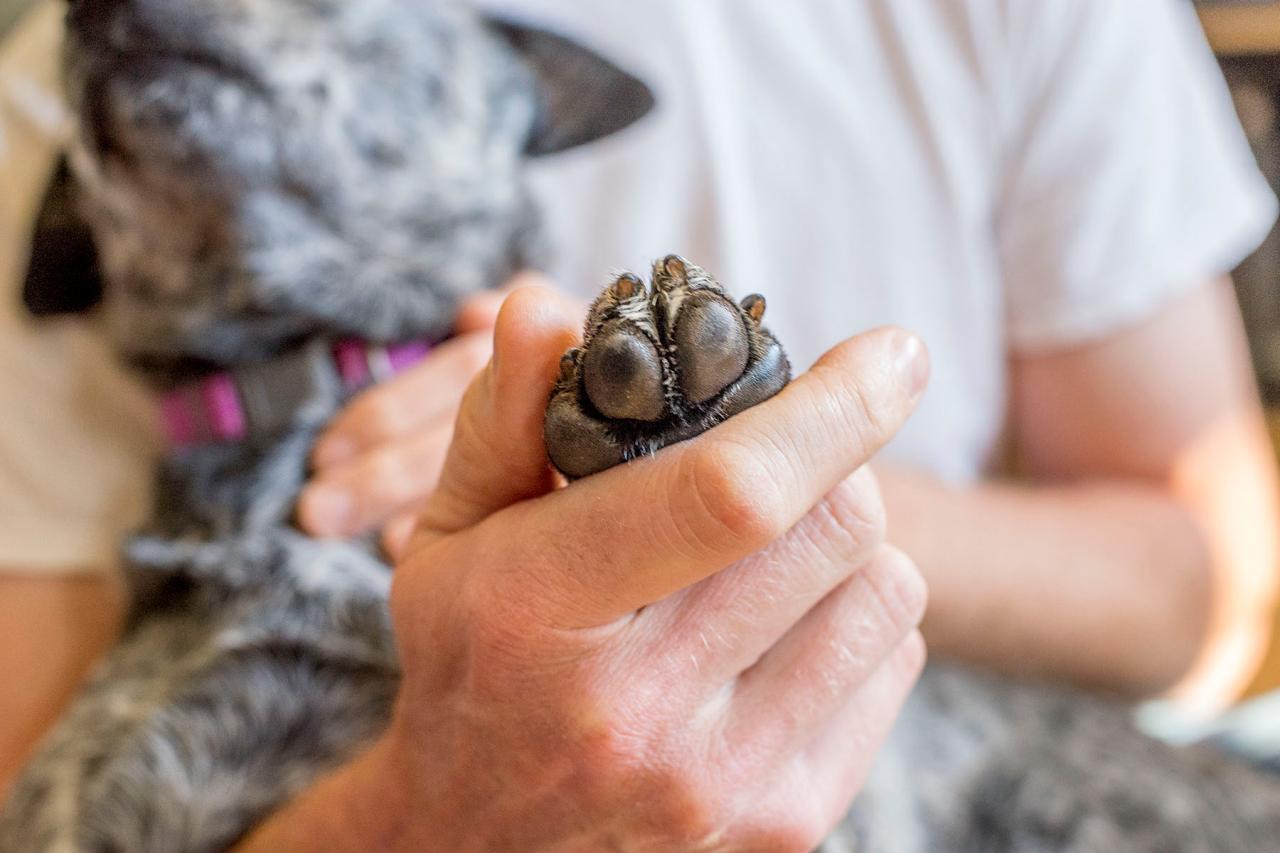Given the chance, dogs love running through tall grasses. Unfortunately, hidden dangers can be lurking in those spaces that many dogs find so inviting, including foxtails. We’ll explain what they are and how to protect your pup from them.
What Are Foxtails?
These grass-like weeds come in different varieties, including green, giant, and bristly, but what distinguishes them—and endangers dogs—are their spikes and barbs. Foxtails grow easily in a wide range of climates and can often be found interspersed with other weedy grasses in wild areas.
The word foxtail also refers to a specific seed structure found atop many species of wild grasses. Foxtails are common in spring, summer, and fall—seasons when many people and their canine pals love to explore outdoor spaces.

You and your dog can encounter different types of foxtail grasses and seeds on hikes through mountains, canyons, fields, river trails, and many other ecosystems. If your socks have ever trapped foxtails, you’ve felt them poking at your skin, and you know how challenging it is to remove them from your clothes.
It is best to examine your dog immediately after walks or hiking in areas where foxtails are prevalent. Prevention begins with catching foxtails before they lodge into any of the areas mentioned above.
How Foxtails Can Hurt Dogs
These spiky seed structures can easily cling to fur when your dog brushes against them. The foxtails’ unique shape causes them to burrow deeper and deeper into your dog’s fur with every step taken.
Undetected foxtails trapped deep in your dog’s fur, stuck to paws, or accidentally inhaled can cause a number of problems, including the following:
- Skin irritation
- Skin infection
- Pain
- Limping & paw damage
- Internal damage (if swallowed or inhaled, for example)
- Inflammation
- Eye irritation & damage
- Violent sneezing
- And other issues
Once a foxtail clings to a dog’s fur, it will keep burrowing itself and may even penetrate the skin. A foxtail can enter the body through any type of opening, like the ears. The pointy, spiky seeds can do serious damage if they get inside a dog’s body.

What to Watch For
If your dog has picked up any foxtails, there are telltale signs to watch for, including these:
- Headshaking: Your dog may have a foxtail stuck to the face, head, or ears.
- Ear pawing: There may be a foxtail in or near the ear.
- Paw licking or nipping: A foxtail may be stuck in the paw.
- Coughing, gagging, sneezing, or difficulty breathing: Signs that a foxtail was swallowed or inhaled.
- Obsessive licking: There may be a foxtail stuck in the spot being licked.
- Abscesses, sores, bumps, or skin infections: Can result from a trapped foxtail.
- Eye squinting, tearing, or discharge: May indicate a foxtail stuck in or around your dog’s eyes.
Signs that a foxtail has gone undetected and has made its way inside your dog’s body include lethargy, a lack of appetite, swellings, and other serious conditions that indicate it’s time to call the vet.

Protect Your Dog
The best way to keep foxtails from getting lodged in your dog is to avoid overgrown and wild grassy patches. Stay on trails that have been cleared and walk in areas absent of tall grasses.
If you do encounter foxtails—such as, you find them in your socks—you should attempt to leave the area. Go to an open clearing devoid of grassy weeds and inspect your dog thoroughly. Examine the coat, paw pads, ears, and other regions.
If foxtails get on your dog, take the time to locate all the spiky seed structures that have attached themselves. Use tweezers to remove them or even a fine tooth comb. If a foxtail is deeply embedded or there are signs of inflammation, call your dog’s vet for help.






